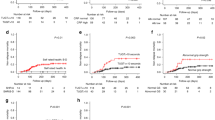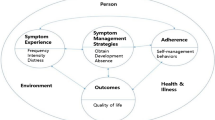Abstract
We performed a retrospective study of 1868 consecutive unrelated donors to predict the risk factors related to general discomfort, limitations in activities of daily living (ADLs) and intention of a second donation in hematopoietic stem cell (HSC) donation. General discomfort and limitations in ADLs were assessed by numerical measurement (scores of 0–10) and donor’s intention of a second donation by yes or no reply. The post-donation questionnaires were completed within 48 h after HSC collection and at 1 week, 4 weeks, and 4 months thereafter. Predictors of general discomfort included female sex (P<0.0001), bone marrow (BM) collection (P<0.0001) or PBSC collection through a central line (CL; P=0.0349), 2-day collection (P=0.0150) and negative or undetermined intention of a second donation on day 1 (P<0.0001). Predictors of limitations in ADLs included age group of 30–39 years (P=0.0046), female sex (P<0.0001), BM collection (P<0.0001) or PBSC collection through a CL (P<0.0001) and negative or undetermined intention of a second donation on day 1 (P<0.0001). The only predictor of positive intention of a second donation was male sex (P=0.0007). Age, sex and collection method and period should be considered risk factors when unrelated HSC donation is performed.
This is a preview of subscription content, access via your institution
Access options
Subscribe to this journal
Receive 12 print issues and online access
$259.00 per year
only $21.58 per issue
Buy this article
- Purchase on Springer Link
- Instant access to full article PDF
Prices may be subject to local taxes which are calculated during checkout
Similar content being viewed by others
References
de la Rubia J, de Arriba F, Arbona C, Pascual MJ, Zamora C, Insunza A et al. Follow-up of healthy donors receiving granulocyte colony-stimulating factor for peripheral blood progenitor cell mobilization and collection. Results of the Spanish Donor Registry. Haematologica 2008; 93: 735–740.
Pulsipher MA, Chitphakdithai P, Miller JP, Logan BR, King RJ, Rizzo JD et al. Adverse events among 2408 unrelated donors of peripheral blood stem cells: results of a prospective trial from the National Marrow Donor Program. Blood 2009; 113: 3604–3611.
Holig K, Kramer M, Kroschinsky F, Bornhauser M, Mengling T, Schmidt AH et al. Safety and efficacy of hematopoietic stem cell collection from mobilized peripheral blood in unrelated volunteers: 12 years of single-center experience in 3928 donors. Blood 2009; 114: 3757–3763.
Pulsipher MA, Chitphakdithai P, Logan BR, Shaw BE, Wingard JR, Lazarus HM et al. Acute toxicities of unrelated bone marrow versus peripheral blood stem cell donation: results of a prospective trial from the National Marrow Donor Program. Blood 2013; 121: 197–206.
Horowitz MM, Confer DL . Evaluation of hematopoietic stem cell donors. Hematology Am Soc Hematol Educ Program 2005; 2005: 469–475.
Halter J, Kodera Y, Ispizua AU, Greinix HT, Schmitz N, Favre G et al. Severe events in donors after allogeneic hematopoietic stem cell donation. Haematologica 2009; 94: 94–101.
WMDA. S(P)EAR alert. 20110824-CLWG-SEAR-August 2011. CLWG-SEAR, 2011, pp 1–2.
Miller JP, Perry EH, Price TH, Bolan CD Jr, Karanes C, Boyd TM et al. Recovery and safety profiles of marrow and PBSC donors: experience of the National Marrow Donor Program. Biol Blood Marrow Transplant 2008; 14: 29–36.
Billen A, Madrigal JA, Strydom A, Szydlo RM, Switzer GE, Shaw BE . Predonation health-related quality of life scores predict time to recovery in hematopoietic stem cell donors. Biol Blood Marrow Transplant 2015; 21: 350–356.
Bredeson C, Leger C, Couban S, Simpson D, Huebsch L, Walker I et al. An evaluation of the donor experience in the canadian multicenter randomized trial of bone marrow versus peripheral blood allografting. Biol Blood Marrow Transplant 2004; 10: 405–414.
Pulsipher MA, Chitphakdithai P, Logan BR, Navarro WH, Levine JE, Miller JP et al. Lower risk for serious adverse events and no increased risk for cancer after PBSC vs BM donation. Blood 2014; 123: 3655–3663.
Gordon SV, Nivison-Smith I, Szer J, Chapman JR . Volunteer unrelated donor experience after administration of filgrastim and apheresis for the collection of haemopoietic stem cells: the Australian perspective. Intern Med J 2013; 43: 1183–1190.
Acknowledgements
We thank the unrelated volunteer donors for their altruistic and generous spirit. We also thank the physicians, coordinators and nurses of all collection centers for their generosity to the unrelated donors.
Author information
Authors and Affiliations
Corresponding author
Ethics declarations
Competing interests
The authors declare no conflict of interest.
Additional information
Supplementary Information accompanies this paper on Bone Marrow Transplantation website
Rights and permissions
About this article
Cite this article
Lee, M., Jang, J., Min, H. et al. Predictors of general discomfort, limitations in activities of daily living and intention of a second donation in unrelated hematopoietic stem cell donation. Bone Marrow Transplant 52, 258–263 (2017). https://doi.org/10.1038/bmt.2016.260
Received:
Revised:
Accepted:
Published:
Issue Date:
DOI: https://doi.org/10.1038/bmt.2016.260



